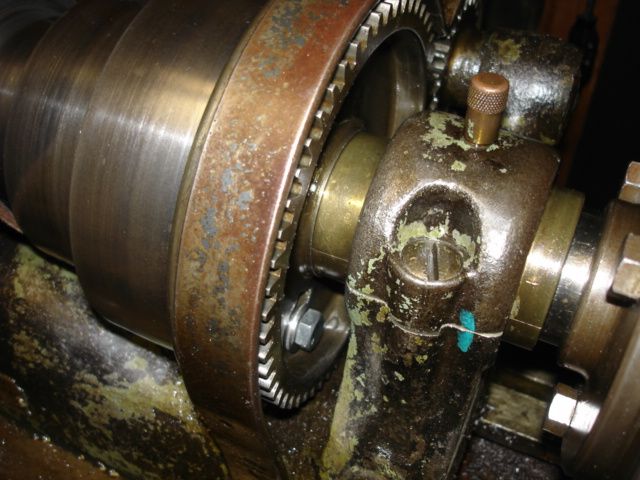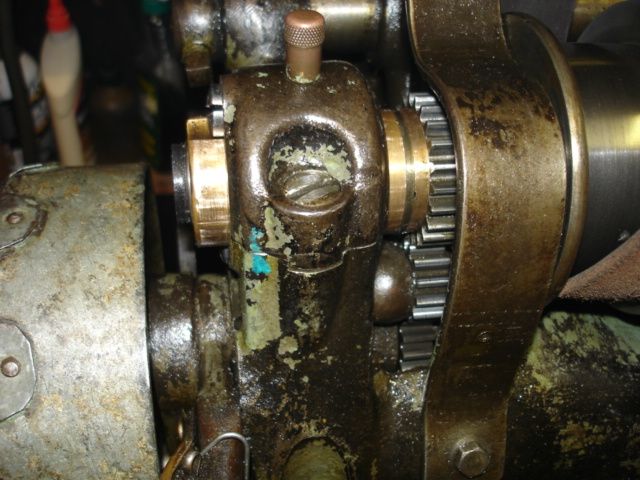ArtTech
Aluminum
- Joined
- Oct 15, 2016
- Location
- Kettle Moraine
Hello all. I have a few questions related to A Barnes Lathe.
The subject has on right side leg casting:
11”
B.F. Barnes CO.
Rockford ILL U.S.A.
I have disassembled the head to repair a worn low gear engagement key.
I am now in process of re shimming bronze bearings (bushing)
I am wondering if someone can give me guidance or a link to the correct procedure to headstock shimming for this lathe. Also any help identifying repair procedures links or info on this particular lathe would be helpful.
From what I gather, the front spindle bearing is done first. Does one shim both sides of the cap equally, or one side only? What are the proper clearances? Radial and axial values for the front bearing at this point are .002” in both directions. Seems free running.
I am now working on the rear bearing (if in fact I have the front bearing correctly set). Is the cap to be shimmed on one side or both sides, or is this a matter of trial and error, to produce free running?
What are the correct clearance values (radial and axial) for the front and rear bearings?
The rear bearing set up on my lathe is:
Towards the front of rear bronze bearing (bushing), there is a hardened steel washer, in front of this a bronze washer, and then the gear which runs the lead screw. Is this the correct orientation for these components? Any help or direction would be appreciated. Alex.



The subject has on right side leg casting:
11”
B.F. Barnes CO.
Rockford ILL U.S.A.
I have disassembled the head to repair a worn low gear engagement key.
I am now in process of re shimming bronze bearings (bushing)
I am wondering if someone can give me guidance or a link to the correct procedure to headstock shimming for this lathe. Also any help identifying repair procedures links or info on this particular lathe would be helpful.
From what I gather, the front spindle bearing is done first. Does one shim both sides of the cap equally, or one side only? What are the proper clearances? Radial and axial values for the front bearing at this point are .002” in both directions. Seems free running.
I am now working on the rear bearing (if in fact I have the front bearing correctly set). Is the cap to be shimmed on one side or both sides, or is this a matter of trial and error, to produce free running?
What are the correct clearance values (radial and axial) for the front and rear bearings?
The rear bearing set up on my lathe is:
Towards the front of rear bronze bearing (bushing), there is a hardened steel washer, in front of this a bronze washer, and then the gear which runs the lead screw. Is this the correct orientation for these components? Any help or direction would be appreciated. Alex.





